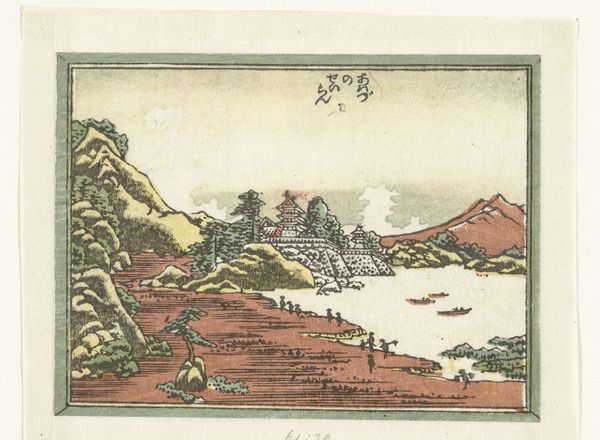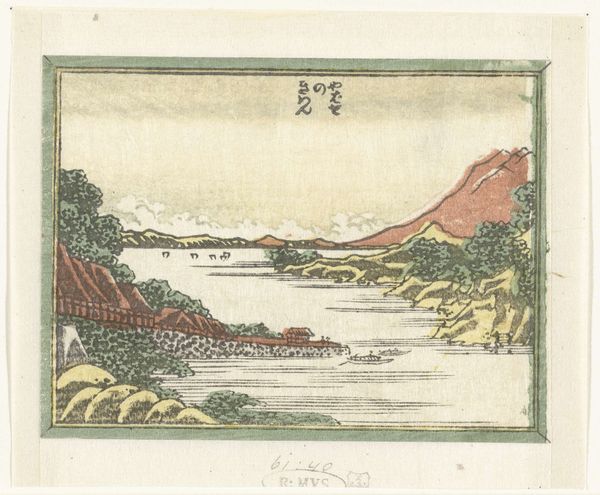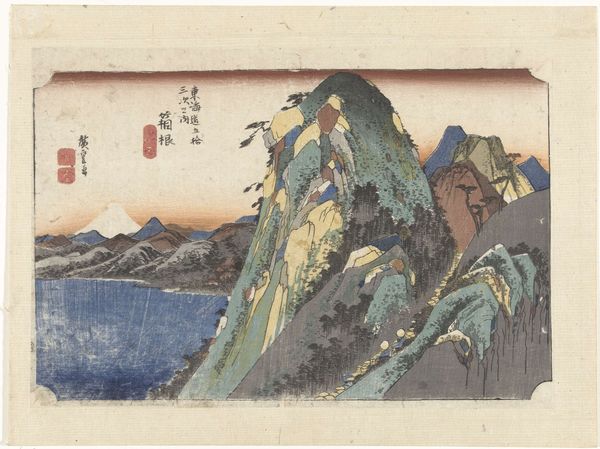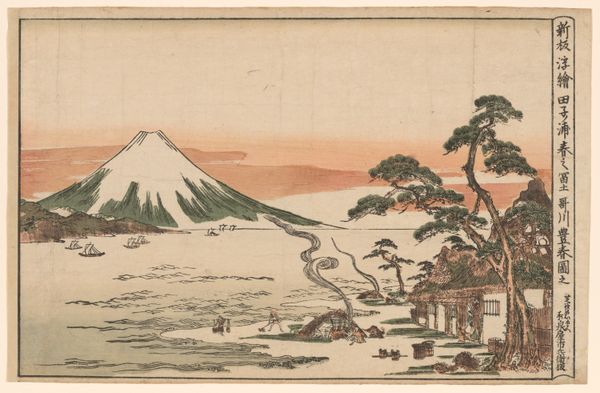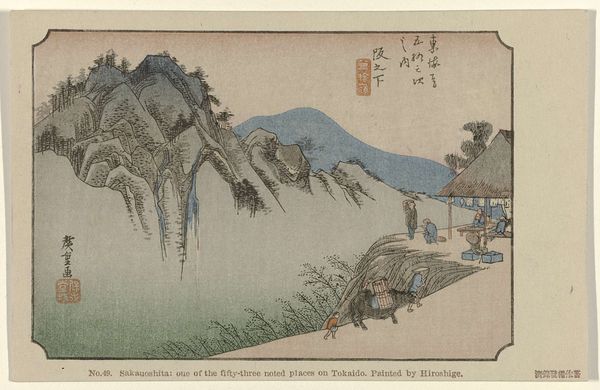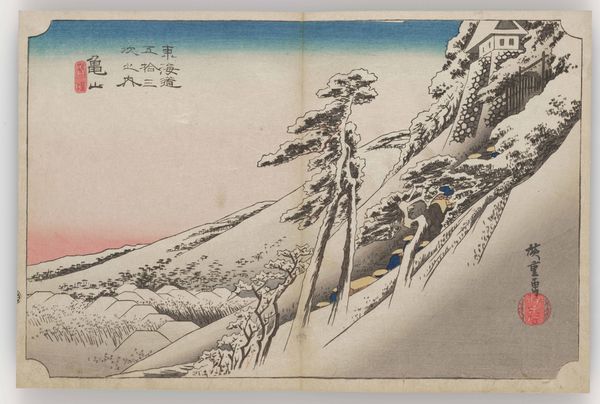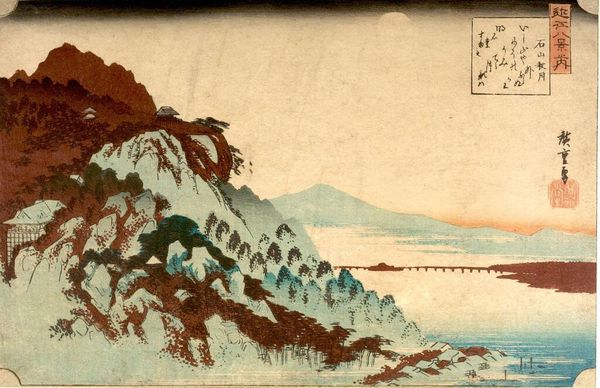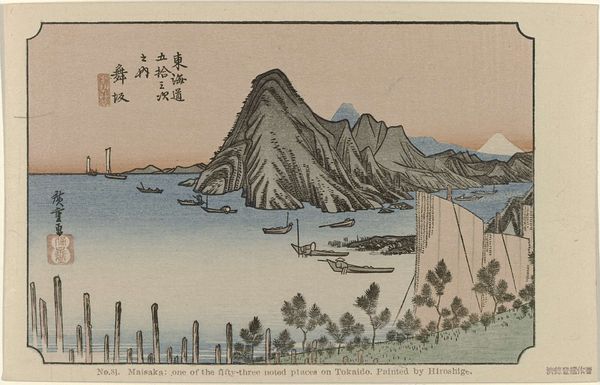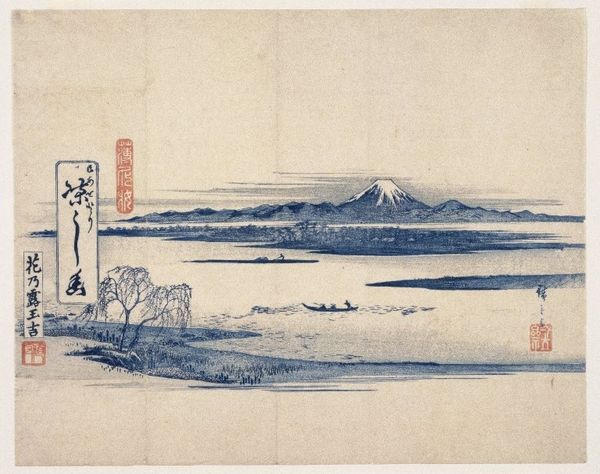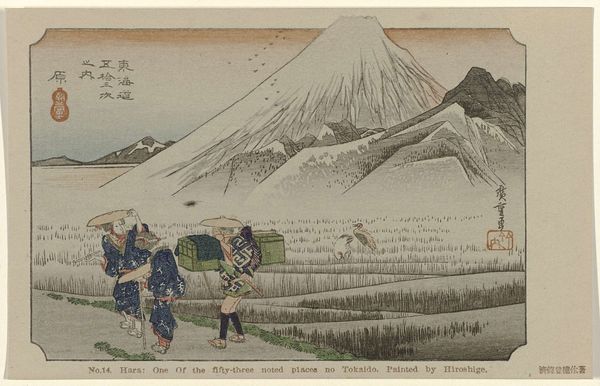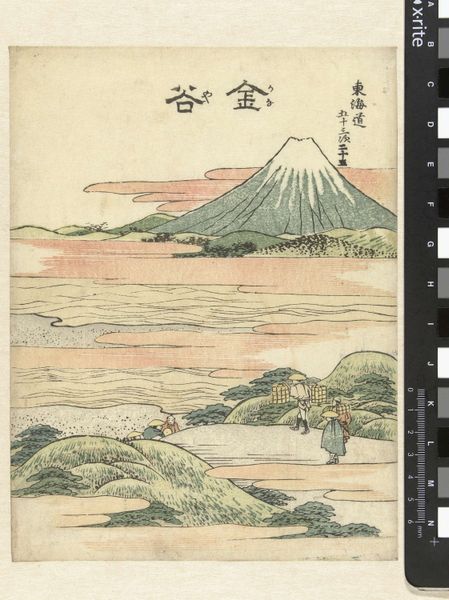
print, woodblock-print
# print
#
asian-art
#
landscape
#
ukiyo-e
#
woodblock-print
Dimensions: height 82 mm, width 111 mm
Copyright: Rijks Museum: Open Domain
Editor: This woodblock print, "Snow on Mount Hira," was created by Katsushika Hokusai sometime between 1809 and 1814. There's a stillness to the scene that’s quite captivating. What aspects of this work stand out to you, particularly regarding its historical context? Curator: Well, seeing this work through a historical lens, I'm struck by how Hokusai navigates the evolving relationship between art and audience. Ukiyo-e prints, like this one, gained immense popularity among the merchant classes in the Edo period, didn't they? This print presents an interesting view; do you see the contrast between the idealized natural landscape, a symbol of stability, and the rising urban culture? Editor: I hadn’t considered that juxtaposition explicitly, but now I do. Is the presentation of nature itself a sort of commentary on those social dynamics? Curator: Precisely! Think about the socio-political forces at play. Woodblock prints democratized art, moving away from elite patronage. Images of scenic beauty, like "Snow on Mount Hira", became accessible to a broader public. Hokusai was not just depicting a landscape; he was participating in reshaping the visual culture of his time. Does the serenity of the image shift for you when viewed this way? Editor: Definitely. It’s no longer just a peaceful landscape; it's a statement on accessibility and cultural identity. It’s almost revolutionary. Curator: Indeed. By examining how art disseminates and gains meaning, we recognize how artists shape cultural narratives. It is fascinating to view familiar works in different perspectives. Editor: It gives the artwork much more dynamism when it relates to its time and reception. Thank you!
Comments
No comments
Be the first to comment and join the conversation on the ultimate creative platform.
